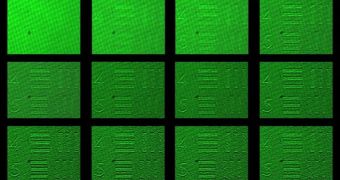In a groundbreaking finding with significant implications for a wide array of research fields, engineers at the Princeton University managed to develop a new method of amplifying and clarifying signals carried by light using noise. The concept refers to the portion of the signal that usually gets distorted during transmission. Generally, this is considered to be a bad thing, and is avoided as much as possible. But the Princeton team managed to create a way of using this to its advantage, PhysOrg reports.
When light passes through a cloud, for example, a large number of photons in that particular beam get scattered from their initial trajectory. The same thing happens when light passes through a translucent window covering. Most of the information the photons encode gets transmitted, but the signal is far from its initial clarity. What the Princeton team did was find a way to use the noise produced when the signal got distorted for amplifying the signal itself, and making it clearer.
This achievement could have far-reaching implications. It could help aircraft engineers develop systems that would allow pilots to see what is ahead through thick layers of fog. Another use would be for boosting the imaging methods medicine currently uses to peer inside the bodies of patients without surgery. Currently, this is possible to some extent, but the innovation could provide additional levels of insight. A wide variety of other hidden objects could also be made visible using the Princeton approach.
“Normally, noise is considered a bad thing. But sometimes noise and signal can interact, and the energy from the noise can be used to amplify the signal. For weak signals, such as distant or dark images, actually adding noise can improve their quality,” Princeton Assistant Professor of Electrical Engineering Jason Fleischer, who has been part of the new investigation, says. He reveals that the method could be used to create more advanced night-vision equipment, for inspecting materials that are underwater, or for improving the security of signals sent through unsecured mediums.
“We used noise to feed signals. It's as if you took a picture of a person in the dark, and we made the person brighter and the background darker so you could see them. The contrast makes the person stand out,” Dmitry Dylov, who is a Princeton electrical engineering graduate student, and also the coauthor of the new investigation, explains. Details of the team's work were published in the March 14 online issue of the esteemed scientific publication Nature Photonics.

 14 DAY TRIAL //
14 DAY TRIAL //